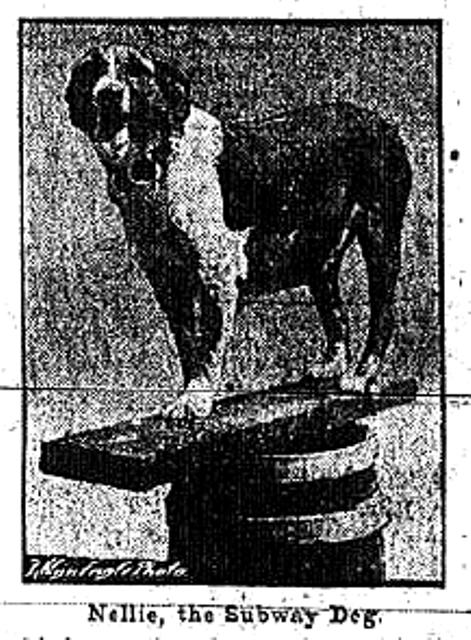
On November 27, 1907, the very first train to go to Brooklyn via the new Battery-Joralemon Tunnel left the Wall Street station in Manhattan at 12:30 p.m. This train carried about 200 men, including officials of the Interborough Rapid Transit Company, engineers, and reporters. Oh yeah, and a mixed-breed dog named Subway Nellie.
In my last post, I wrote about Jerry Fox, Brooklyn’s mascot cat (is that mascat?) who lost his ninth and final life in 1904 when he fell into an open subway shaft near Borough Hall. This next story is about a dog named Subway Nellie, who was the mascot of that very same subway tunnel.
A Rapid Transit Tunnel to Brooklyn
In May 1900, a committee of 50 Brooklyn men appeared before New York’s Rapid Transit Commission to advocate for a full extension of the subway system to Brooklyn. The Committee of 50 suggested a route that would extend through Broadway to the Battery in Manhattan, under the East River and Joralemon Street in Brooklyn, past Borough Hall, up Fulton Street to Flatbush Avenue, and then to the Long Island Railroad Station at the junction of Flatbush and Atlantic Avenues.
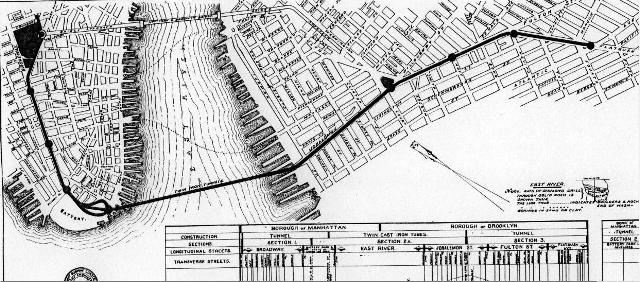
On July 24, 1902, the contract (Contract #2) to build this extension and a tunnel under the East River — called the Battery-Joralemon Tunnel — was awarded to the Rapid Transit Construction Company. This company was owned by August Belmont Jr. and John B. McDonald, the pioneers of New York’s first subway line (Contract #1). The contract was signed on September 11, 1902, and ground was broken in January 1903.
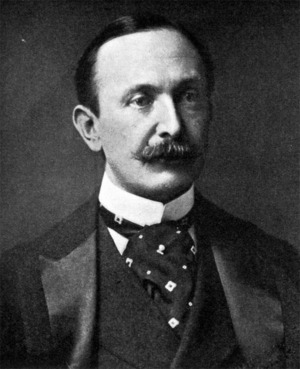
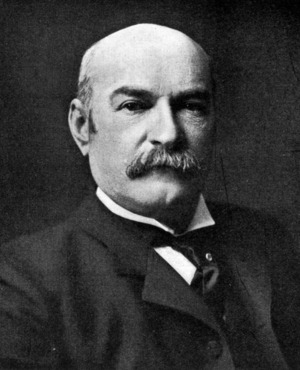
A Frozen and Starving Puppy
In the winter of 1905, a young mutt sought shelter in the offices of John B. McDonald, near Brooklyn’s Borough Hall, during a severe snowstorm. The shaggy-haired puppy, half starved and frozen, drank some warm milk that the men offered her, and then crawled under a stove to thaw out.

The men didn’t have the heart to kick her out, so they decided to keep her and call her Nellie – an extremely popular name for female dogs in those days. It would be a little more time before they started calling her Subway Nellie…
Although the offices were warm and comfortable, Nellie was also very interested in all the digging and shoveling outside. (I imagine she thought the men were burying a giant bone.)
As the tunnel expanded, and she was able to wander around without getting in the way of shovels and picks, she started to spend most of her time in the excavation area.
Every time the hollow was enlarged, Nellie would inspect the new portion with a critical eye, wave a paw over the uneven spots, and sleep until it was time to inspect the next phase of the job.

As time passed, Nellie became so interested in the work that she didn’t sleep at all during the working hours. She’d examine the work in progress, and show her approval or disapproval with short barks of delight and growls of displeasure. The 500 hundred or so men who were working far below the streets, from the river tubes to Flatbush Avenue, grew quite fond of the little dog.
Her Name Is Subway Nellie
When the excavation project was big enough for people to begin calling it “the subway,” the men christened Nellie with the name “Subway Nellie” in order to make sure that no one confused her with all the other dogs named Nellie in the neighborhood. As time progressed, the subway mascot became very well known around downtown Brooklyn (but not as well known as Jerry Fox, I bet).
With her charming manners she could show up at any restaurant around Borough Hall and be sure of a good meal. “Here comes Subway Nellie,” the restaurant proprietors would say while the employees prepared a plate for her.
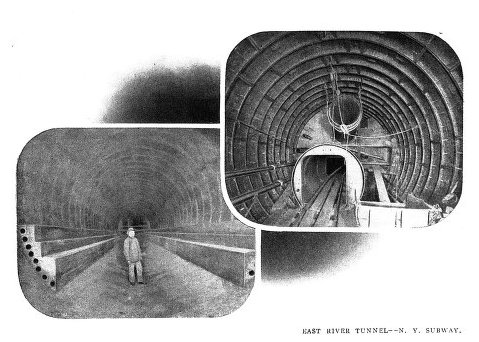
As new hands joined the subway extension project, the foreman and other bosses advised them to be friendly to the canine. Of course there was no need to give these orders, because all the men appreciated her knowledge and work ethics. Subway Nellie knew every nook and cranny of the tunnel from Borough Hall all the way out. (She was even allowed to enter the airlocks and explore the high-pressure chambers.)
And she knew who owned every tool – in fact, it was said that if she saw that a riveter had forgotten his hammer, she’d promptly fetch it without being asked.
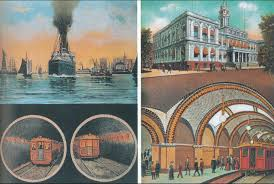
Nellie the Timekeeper
Subway Nellie also had a knack for telling time and apparently figured out that the men began work at a certain time, quit at a certain time for lunch, and then came back again to work until 6 p.m. She also seemed to understand that these times correlated to a loud whistle, which the foreman signaled by pulling a cord on a donkey engine.
Putting these two facts together, Nellie decided that it was her obligation to rush up to the cord and pull it with her teeth whenever it was time to start or stop work. When a reporter from the Brooklyn Daily Eagle asked the foreman if he thought Nellie could tell time he replied, “Maybe she could, only there are no clocks in the tunnel.”
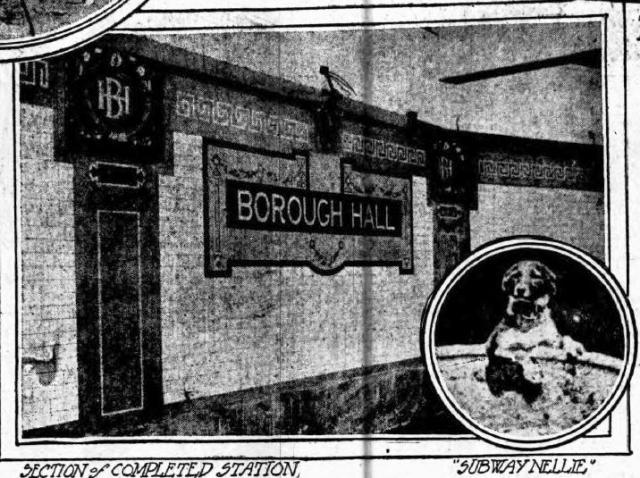
The Guest of Honor
On November 27, 1907, the very first “test run” train to Brooklyn via the new Battery-Joralemon Tunnel left the Wall Street station in Manhattan at 12:36 p.m. This train carried about 200 men, including railroad officials, engineers, and reporters. Subway Nellie was the canine guest of honor on this very first trip.
The conductor for this train was chief motorman Morrison. He drove the three-car train around the South Ferry loop, back up to Bowling Green station, and then through the north tunnel (the south tunnel wasn’t completed yet). The train arrived at Brooklyn Borough Hall at 12:55 p.m. (The train went faster on the return trips: 7½ minutes and then 5 minutes.) A large crowd inside and outside the station greeted the train – they were attracted to the station by the ringing of the bell on top of Borough Hall, as ordered by Borough President Bird S. Coler.
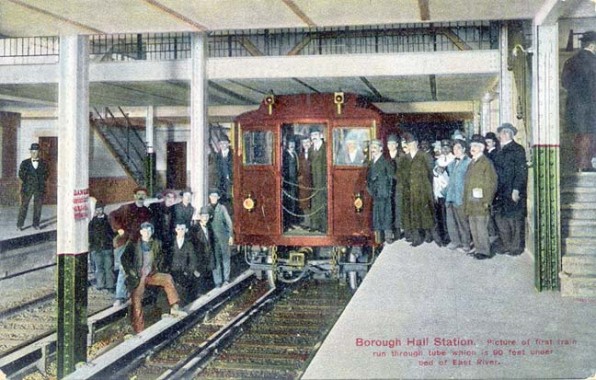
A Celebration to Rival the Brooklyn Bridge Party
After this test run, the first experimental train was a West Farms Express that left Bowling Green at 11:30 a.m. on January 6, 1908. Three days later, the first official train, a standard 8-car express train conducted by Grant Cooper, left the West Farms Square station (East Tremont Ave.) at 11:50 p.m. and arrived at Borough Hall at 12:49 a.m. At 12:51 a.m., it began the hour-long, five-cent return trip to the Bronx.
Because of the early hour, a formal ceremony took place about 10 hours after the train’s arrival in Brooklyn. The celebration, hosted by the Citizens’ Committee, began around 11 a.m. with a reception in the Manhattan City Hall. After the reception, the party proceeded to the Brooklyn Bridge station, where a special decorated train took them through the tunnel to Borough Hall.
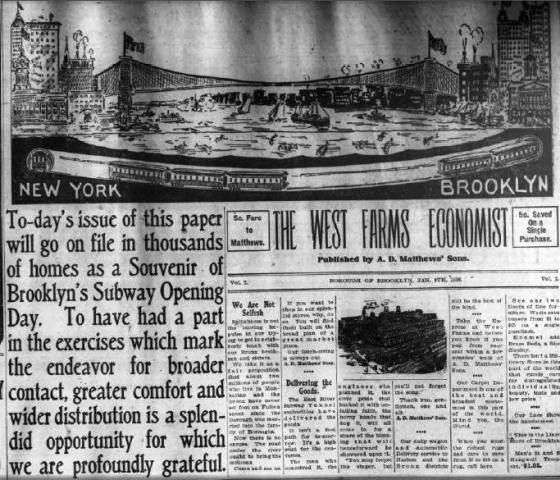
Throngs of enthusiastic “citizens and their wives and sisters” (I guess women were not citizens then) greeted the train and gathered at the station all day long. Horns were blown, bells were rung, and everyone took a ride under the river. The trains through the tunnel were packed to the doors from morning till night.
I’m not sure what happened to Subway Nellie after this big day, but I do know that the workmen who spent a few years underground with Nellie told the press they would make sure that she lived in luxury for the rest of her life after the subway was completed. Today, a bronze tablet in the Borough Hall Station commemorating the IRT extension is all that remains of the days a tunnel united Manhattan with Brooklyn under the East River.




[…] in Brooklyn Heights. He seemed to take very well to tunnel life, and for about eight months, until Nellie the Subway Dog appeared, Bright Eyes was the only mascot of the tunnel workers. The cat took his job as mascot very […]